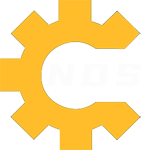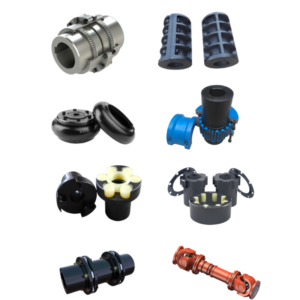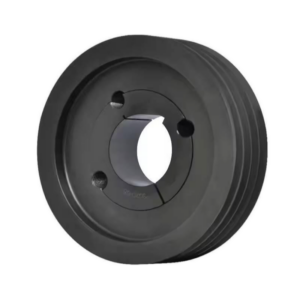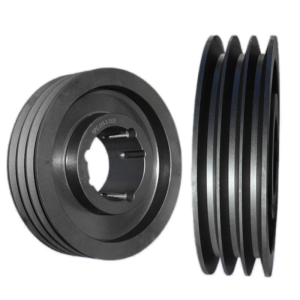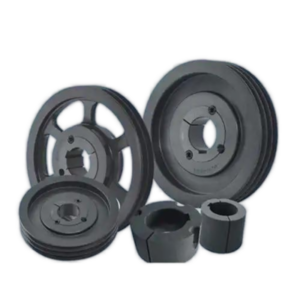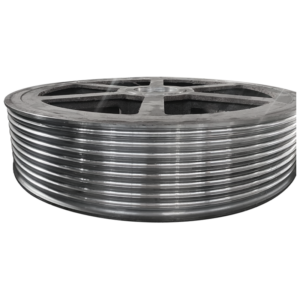In modern mechanical transmission systems, couplings, taper bushings, pulleys, and sprockets work together to ensure efficient power transfer between shafts and various driven components. Each part plays a specific role, but their proper coordination is what guarantees smooth operation, reliability, and ease of maintenance.
1. Couplings and Their Function
Couplings are mechanical devices used to connect two shafts together at their ends to transmit torque. They compensate for minor misalignments and reduce shock loads during operation. Common types include flexible couplings, rigid couplings, and jaw couplings. In power transmission systems, couplings are often installed between motors and gearboxes, or between pumps and driving shafts, to ensure smooth torque transmission.
2. Role of the Taper Bushing
The taper bushing (also called a tapered sleeve or taper lock bush) is a key connecting component that provides a secure and precise fit between the shaft and the driven part—such as a pulley, sprocket, or coupling hub. Its tapered design allows for easy installation and removal without damaging the shaft. By tightening the screws on the bushing, it grips the shaft firmly, ensuring accurate centering and strong torque transmission.
Taper bushings standardize the bore sizes, making it possible to mount the same pulley or sprocket on shafts of different diameters simply by changing the bushing.
3. Pulley and Sprocket Applications
Pulleys are primarily used for belt drive systems, transmitting motion between rotating shafts via belts. They are widely applied in machinery, compressors, conveyors, and agricultural equipment. Sprockets, on the other hand, are used in chain drive systems, providing a positive engagement that minimizes slippage and ensures precise power transfer—commonly seen in motorcycles, conveyors, and industrial equipment.
4. Coordinated Use for Efficiency
In practice, pulleys and sprockets are often designed with taper bushing mounting holes. This modular design simplifies replacement and maintenance, as users can easily remove or change the pulley/sprocket without dismantling the entire shaft assembly. When combined with couplings, the system achieves both flexible power transmission and convenient alignment adjustments.
For example, a motor can drive a pulley through a coupling, which transfers motion via a belt to another pulley mounted on a taper bushing. This setup not only delivers stable torque but also allows for quick component replacement and reduced downtime.
5. Advantages of the Combined System
- Easy installation and removal – The taper bushing ensures quick assembly without heating or special tools.
- Reliable torque transmission – Strong clamping and accurate centering reduce vibration and wear.
- Flexibility – Couplings allow for minor misalignments, while pulleys and sprockets provide adaptable transmission ratios.
- Maintenance convenience – Standardized parts make replacement fast and cost-effective.
Conclusion
The combination of couplings, taper bushings, pulleys, and sprockets represents an efficient, modular, and reliable solution for modern mechanical power transmission. Their coordinated use not only enhances mechanical performance but also reduces downtime, making them indispensable components in industrial machinery today.
